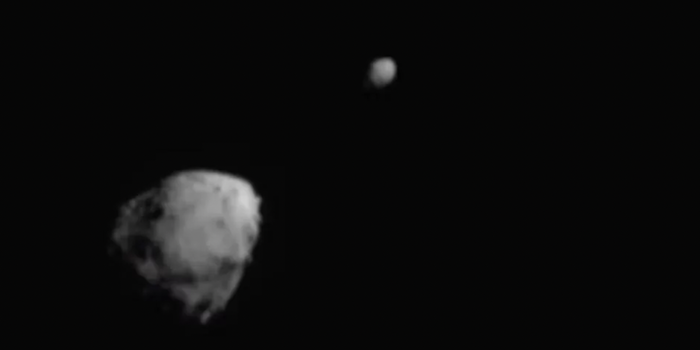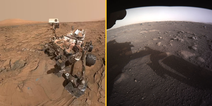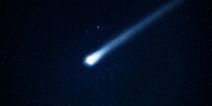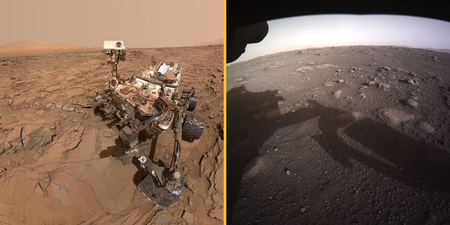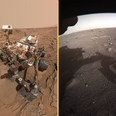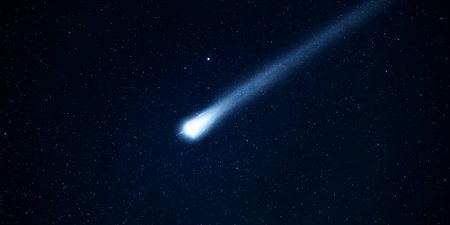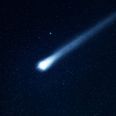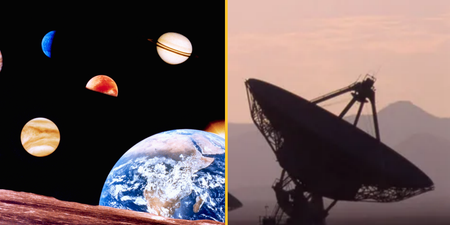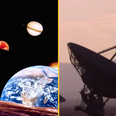This moment in history could one day save humanity
NASA has successfully smashed a spacecraft into an asteroid for the first time ever, in a mission that could one day save our planet.
The space agency made history when its Double Asteroid Redirection Test spacecraft [DART] crashed into the asteroid Dimorphos at 14,400 miles per hour on Monday night, to test whether the impact could alter the asteroid’s orbit.
The asteroid was hit at around 7.14pm – a staggering seven million miles from Earth.
Dimorphos is harmless, and about a kilometre-less in width than an asteroid that could destroy Earth. But space scientists hope the test will prove asteroid deflection – also known as the kinetic impactor technique – can be used to deter asteroids that are heading for Earth, and could therefore one day save our planet from an asteroid strike capable of ending humanity.
Speaking about the $330 million mission a press conference on Thursday, NASA planetary defense officer Lindley Johnson said: “This demonstration is extremely important to our future here on the earth, and life on earth.”
NASA and astronomers working with them across the globe chose their target carefully – selecting an asteroid they can monitor following the collision, as well as one that wouldn’t send a previously harmless piece of rock spiralling towards Earth.
They picked a pair of asteroids: the 780-metre-wide Didymos, and its moon Dimorphos, which is 160 metres wide, about the size of the Great Pyramid.
In comparison, the DART mission spacecraft was around the size of a vending machine.
The asteroid is far too small and far away for the spacecraft to be steered into it from Earth, so an autonomous guidance system had to be used to target it. Didymos is so small, in fact, that it was only visible on DART’s cameras about 50 minutes before impact. But despite this, the sat-nav worked its magic.
Because Dimorphos is already safely orbiting its bigger partner, they can study the change in its behaviour following the collision.
NASA and other agencies will now watch in the aftermath using telescopes on the ground and in space to see if the impact changes the speed at which Dimorphos orbits its larger asteroid companion Didymos.
Despite the spacecraft smashing into the asteroid at thousands of miles an hour, the effect on the asteroid is expected to be small – changing its speed by just 0.4mm per second.
But over time, that should have a measurable effect on its orbit.
Scientists of course have many other methods that they are exploring.
One a “gravity tractor”, Dr Johnson explained, “which is just taking a spacecraft keeping with the asteroid and using nature’s tug rope, gravity, the mutual attraction between the spacecraft and the asteroid will slowly tug that asteroid out of its impacting trajectory into a more benign one.”
But the key is also knowing where all the potentially threatening asteroids are. Currently, there are just over 2,250 potentially hazardous asteroids near Earth that astronomers are aware of. They estimate ti have tracked the orbits of 95% of asteroids large enough to destroy life on Earth and none are currently thought to be on course for collision. But there are many smaller ones, and while no known asteroid larger than 140m across is likely to hit Earth in the next 100 years, they think they’ve only found about 40% of them.
NASA hopes its upcoming mission ‘Near Earth Object Surveyor’, which is a space telescope currently in its preliminary design review phase, will help scientists discover any asteroids that could be hiding in the glare of the Sun, and give them sufficient time to deal with them in the best possible way.
So thankfully, scientists reassure us that it shouldn’t be as chaotic as it looks in the disaster films.
“Hollywood and movies, they have to make it exciting,” Dr Johnson said, “You know, we find the asteroid only 18 days before it’s going to impact and everybody runs around as if they’re on fire.
“That’s not the way to do planetary defence.”
Related links:
- Hundreds of people report sightings of ‘multicoloured fireball’ over Scotland and Northern Ireland
- Scientists discover a habitable planet where the average life expectancy would be 3,158 years
- Fortune teller Nostradamus has made five chilling guesses for next year
